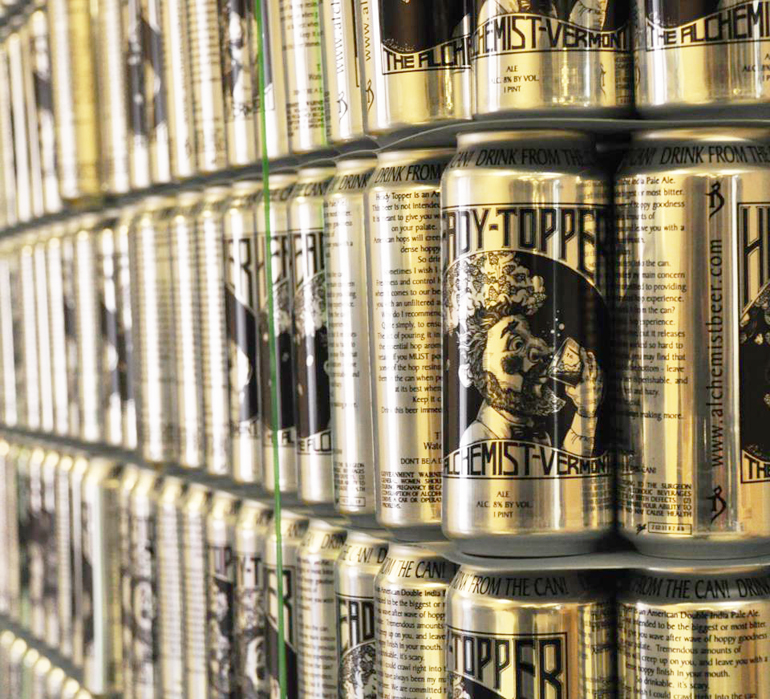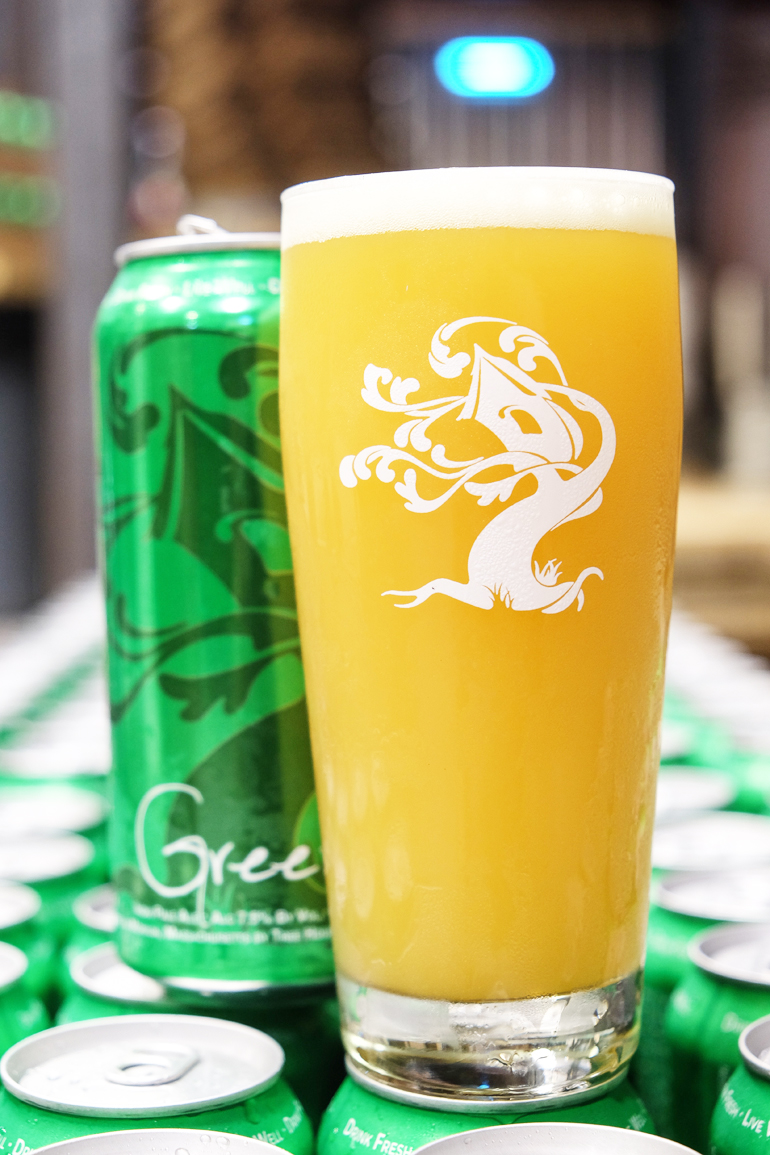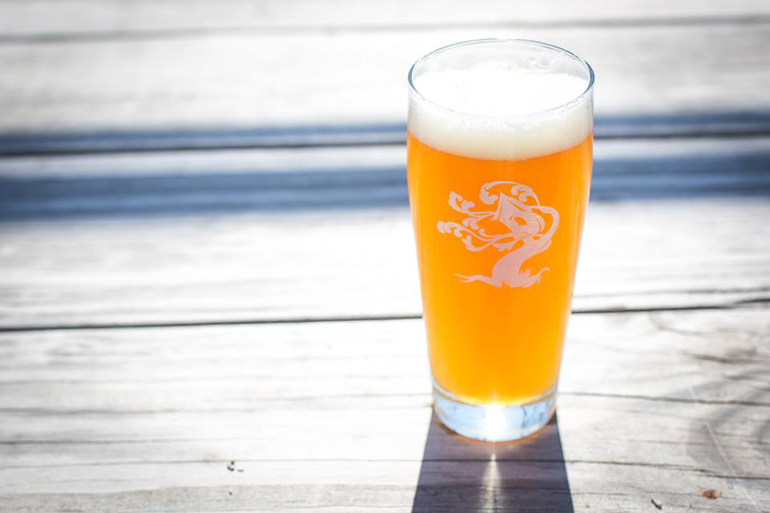Start 14-Day Trial Subscription
*No credit card required

Getting Juiced About New England IPAs (Issue 32)
Back in what could be described as the heady days of the emergence of the Northeast-style IPA, I was working as the editor of The Beer Connoisseur. We decided to expand the staff and in the post-recession era a large pile of resumes quickly accumulated on my desk. One went right to the top. In addition to self-evident writing skills and humor, this application stood out because an unsolicited goal was included: to drink a Heady Topper before the end of the year.
 Not too long after this editorial assistant was hired, we actually had some Heady Topper delivered to our offices in Atlanta, although there was something a little odd about this four-pack of 16-ounce cans from Vermont. It appeared as if each beer had been hit with a hammer – so no photos were possible for our beer review due to the crumpled cans. In addition, there was a note asking us to please not review it as well as the suggestion we drink it straight from the can.
Not too long after this editorial assistant was hired, we actually had some Heady Topper delivered to our offices in Atlanta, although there was something a little odd about this four-pack of 16-ounce cans from Vermont. It appeared as if each beer had been hit with a hammer – so no photos were possible for our beer review due to the crumpled cans. In addition, there was a note asking us to please not review it as well as the suggestion we drink it straight from the can.
The year was 2015 and even then, The Alchemist Brewery was trying to avoid having its flagship brew photographed in the glass, which was standard with our reviews, due to the cloudy appearance of this much sought-after IPA. (There was also the consideration that such a wildly popular beer could only lose if a review scored anything less than 100; a lesser score was entirely possible since this beer did not relate well to accepted guidelines for an American IPA.)
How times changed. Is there any brewer not making juicy, hazy, over-hopped, high-gravity IPAs these days? Instead of shying away from the fact these beers can be cloudier than a rainy day in London, breweries are touting the presence of all that unfiltered yeast and sugary polyphenols previously considered to be something akin to floating debris, if not contamination.
The so-called New England-style or Northeast-style IPA gives every appearance – ahem – of continuing its rocket-like trajectory when it comes to popularity. About the only place you won’t find this specific style is at the upcoming Great American Beer Festival, where any brewery submitting one will have it lumped in with all the other American IPAs.
This is not a treatise on why the Brewers Association should include Northeast-style IPAs as a separate category. As it is, judges know that when they see a hazy or cloudy IPA it’s not necessarily a fault unless there’s pretty easily recognized astringency involved.
 It will be intriguing to see if a de facto NE-style IPA wins at medal this year without having its own category. The crowning glory for this trend would be a gold medal versus those classically bitter, but balanced and floral IPAs that traditionally have ruled the roost. Or the tropical, well hopped IPAs that flirt with the definition of a NE-style that have won the past two years such as Shanghai'd IPA (2015) from Old Town Pizza & Brewing in Portland, Oregon or Bodhizafa (2016) from Georgetown Brewing Company in Seattle.
It will be intriguing to see if a de facto NE-style IPA wins at medal this year without having its own category. The crowning glory for this trend would be a gold medal versus those classically bitter, but balanced and floral IPAs that traditionally have ruled the roost. Or the tropical, well hopped IPAs that flirt with the definition of a NE-style that have won the past two years such as Shanghai'd IPA (2015) from Old Town Pizza & Brewing in Portland, Oregon or Bodhizafa (2016) from Georgetown Brewing Company in Seattle.
The variations of unfiltered IPAs loaded with late additions of aroma hops may more or less come to define the American IPA in the near future. Who, then, needs a separate category?
The four keys to the style concern a relatively soft water profile, heavy hopping with aroma hops added late in a manner that trims back bitterness, low flocculating yeast and higher gravity that produces less attenuation and more retained sugars in the final product.
It is a style that is changing the balance of power in the brewing industry, especially when coupled with the trend toward tasting rooms and taps that rotate quickly. (At this stage, it’s best to fully disclose the fact I now handle media relations for Scofflaw Brewing Company in Atlanta, where I have seen all these craft brewing phenomena of the new IPAs, tap room fever and rapid turnover of beer styles first hand.)
At this point, I find myself mulling over this question: What was going on with that incredibly bitter trend in American IPAs anyway? The IPA winner at the GABF as recently as 2013 was the very bitter Pallett Jack from Barley Brown’s Beer. Not long ago, I found myself writing about a beer commemorating the 100th running of the Indy 500 that touted 100 IBUs.
There was a time frame when it appeared everybody regarded his or her palate as if it was the Last Frontier in America in the sense that something adventurous must cross it regularly. The ultra-bitterness thing in craft brewing, it seems to me, was part of that movement.
I continue to lust after the familiar, well-made West Coast-style IPAs that tend toward bitter and slightly piney such as Torpedo by Sierra Nevada Brewing Company. In effect, Torpedo was an early effort to get more citrus aroma and less bitterness during dry-hopping with whole cones. I hanker even more so for the now classic Double IPAs since they generally have more malt balance and relatively less bitterness such as Pliny the Elder from Russian River Brewing Company (when I can get it) or the more readily available 90-Minute IPA by Dogfish Head Craft Brewery.
To me, hops are like an analgesic for the brain that bring an added bonus to the experience of alcohol swirling through the subterranean passages. First, there’s the “hopped up” upper, followed by the smoooothhher ride of hop sedation. To my way of thinking, if you can call it that, the NE-style IPA starts with intense aroma therapy and the flavors of a citrus garden before moving into these other neighborhoods with great gusto due to the overload of the aroma hops.
A trend, yes. A fad, no. Are NE-style IPAs just another stop in the craft beer revolution as the movement continues down the tracks with now steady, locomotive momentum? If so, I can’t wait to arrive at the next station.
By the way, the guy hired back in the day – Jim Dykstra – is now the editor of this magazine!

(Jonathan Ingram is a veteran beer writer who contributes to a variety of beer publications in addition to handling Media Relations for Scofflaw Brewing Company.)
(Photos courtesy respective breweries: Cerebral Brewing, The Alchemist, Treehouse Brewing)




Comments